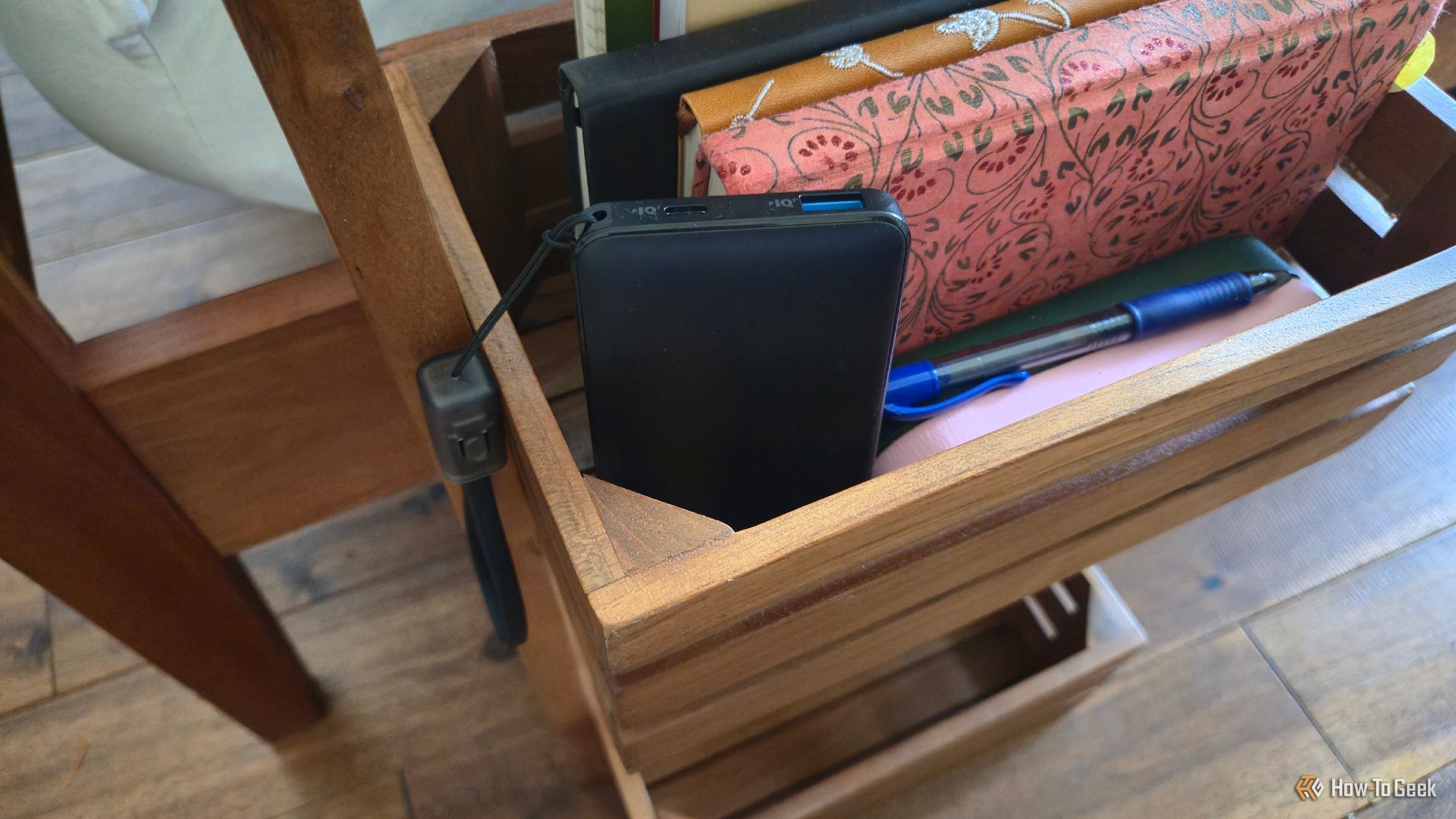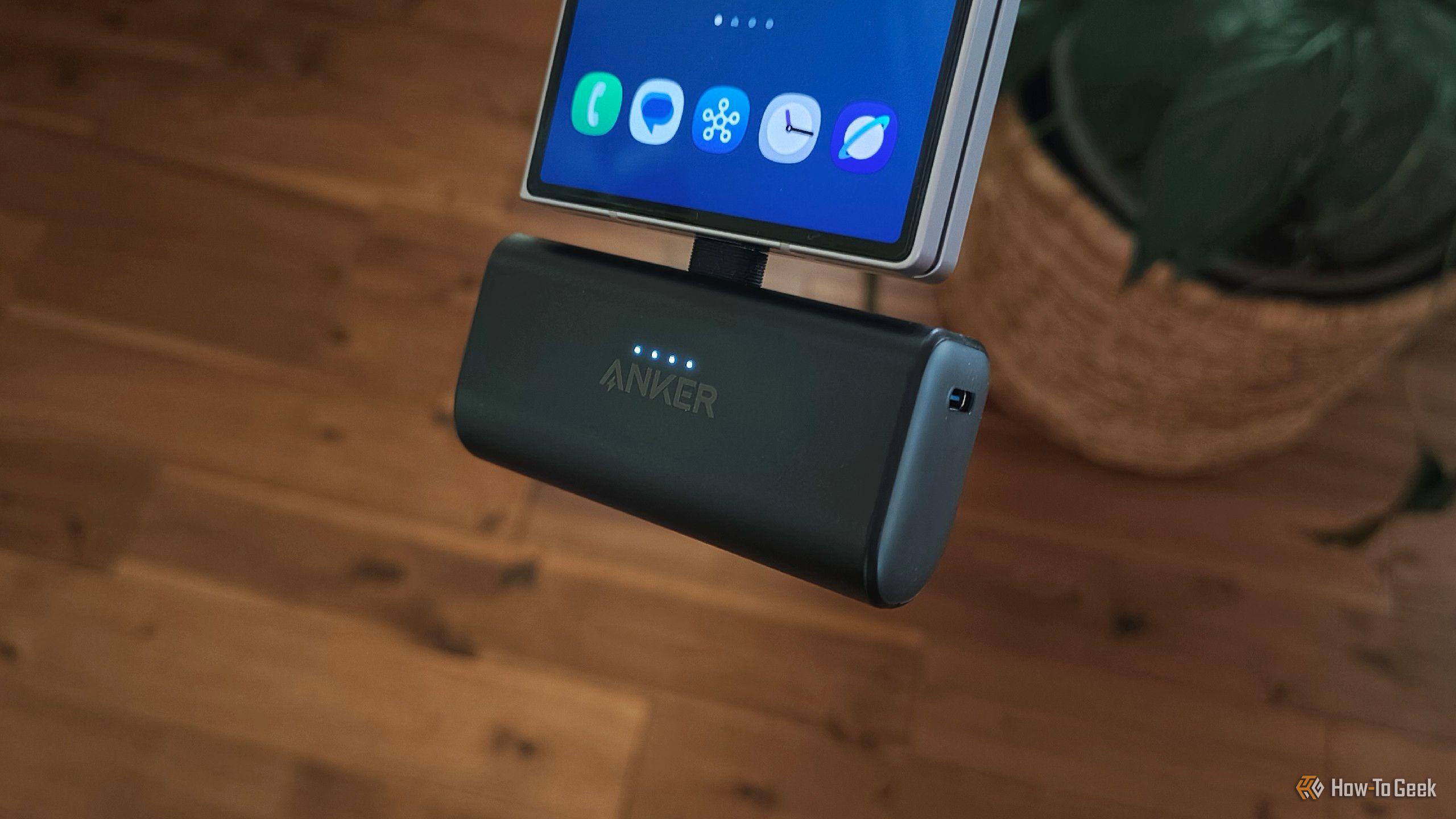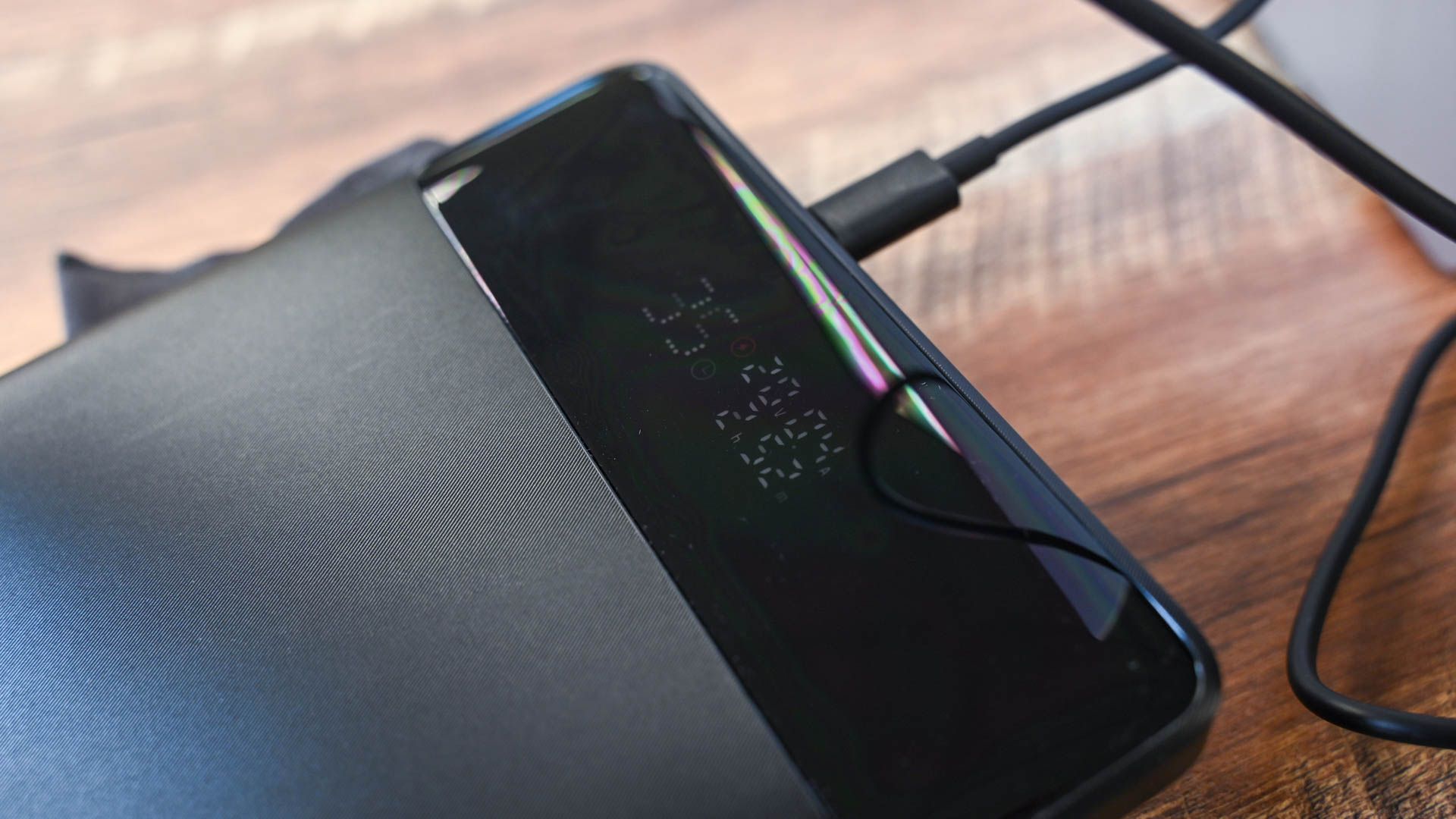I’ve long thought of portable power backs as having two purposes—providing power when traveling or when the power’s out. Turns out these batteries are worth using around the house, even when the power’s on. Here’s why I’ve started leaving batteries lying around everywhere.
4
I Can Charge Anywhere in the House
I live in a home with an open-concept layout. In the living room, our sofa sits in the middle, far from any walls or outlets. The same is true of our dining table. The furniture in our bedroom, too, is all at least a couple feet from the nearest outlet. Many of the places where we often want to use devices require an extra-long charging cable or extension cord to reach.
We initially thought of expensive solutions, like having power outlets in the floor (that’s against code in our area, turns out). We could run surge protectors to where we need them to be, then cover up the cords, but that still seemed like a tripping hazard.
The best solution was more simple: just get portable power banks. Smaller banks are suitable for phones and tablets. More powerful power banks, like the Anker Power Bank 25k, are available for more thirsty devices like a laptop or Nintendo Switch. With these, it no longer matters at all where the nearest outlet is, and we’re still charging at the same speeds.
-
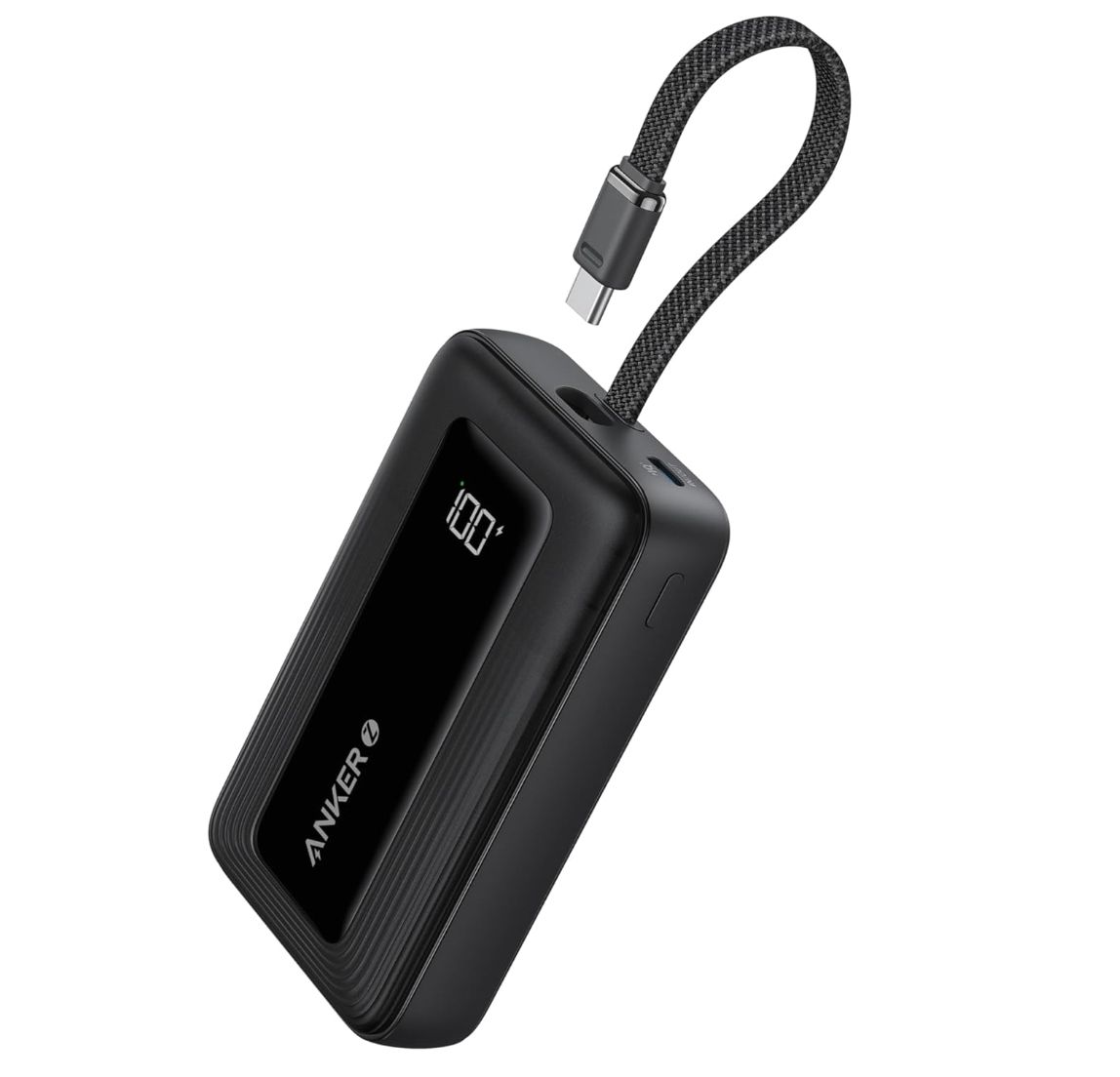
Anker Zolo 10K Portable Charger
If you’re looking for a fast and affordable portable charger for all your gear, the Anker Zolo 10K power bank is the perfect solution. With 30W fast charging and a built-in USB-C cable that doubles as a lanyard, this one device does it all.
-
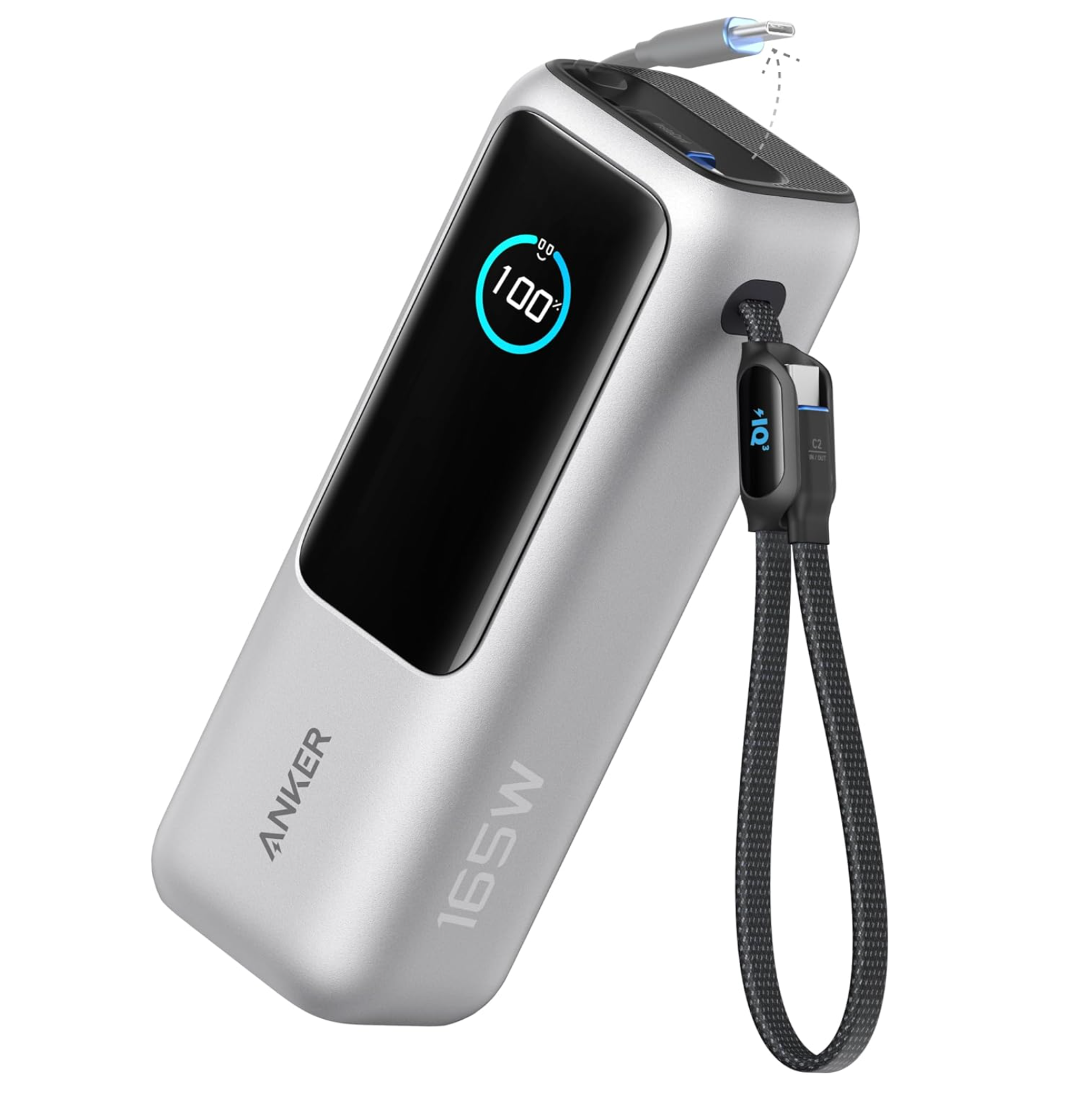
Anker 25K Power Bank (165W, Built-In and Retractable Cables)
Never run out of power, whether you’re charging smartphones, tablets, or other USB-enabled devices. Connect up to four at once thanks to dual USB-C Cables, a USB-A port, and a USB-C port.
3
I Have the Mobility to Move Around
Relying on a power outlet means being tethered to a wall while a device charges. In our home, this also means setting up wires for family members to trip over. When that happens, both people end up mildly frustrated with the other, and justifiably so.
Battery banks not only cut the cord, so to speak, but they provide the freedom to move around. I can charge my phone in the kitchen while cooking, then move it with me to the dining table without interrupting the charging session. Many battery banks are small enough that I can comfortably hold one and my phone at the same time while walking.
I have a 5,000mAh Anker Nano power bank that plugs into the bottom of my phone like an oversized flash drive. Its entire purpose is to make charging an act that doesn’t get in the way.
This type of battery is one of many reasons I don’t care how big my phone’s battery is anymore. Charging has become so abundant and easy.
2
I’m Better Prepared for Emergencies
I give a lot of thought to being prepared for emergencies. I lived through several hurricanes as a kid, and the vulnerability of being without power, particularly in a rural area with fallen trees and no running water, stuck with me. Relying on a gas generator felt like being on borrowed time, since gas runs out daily, and the lines at stations can mean being separated from my family for hours. And that’s not even getting to my sensitivity to the fumes and loud noise.
I’ve been grateful for modern technology and the chance to power my home with portable power stations big and small instead.
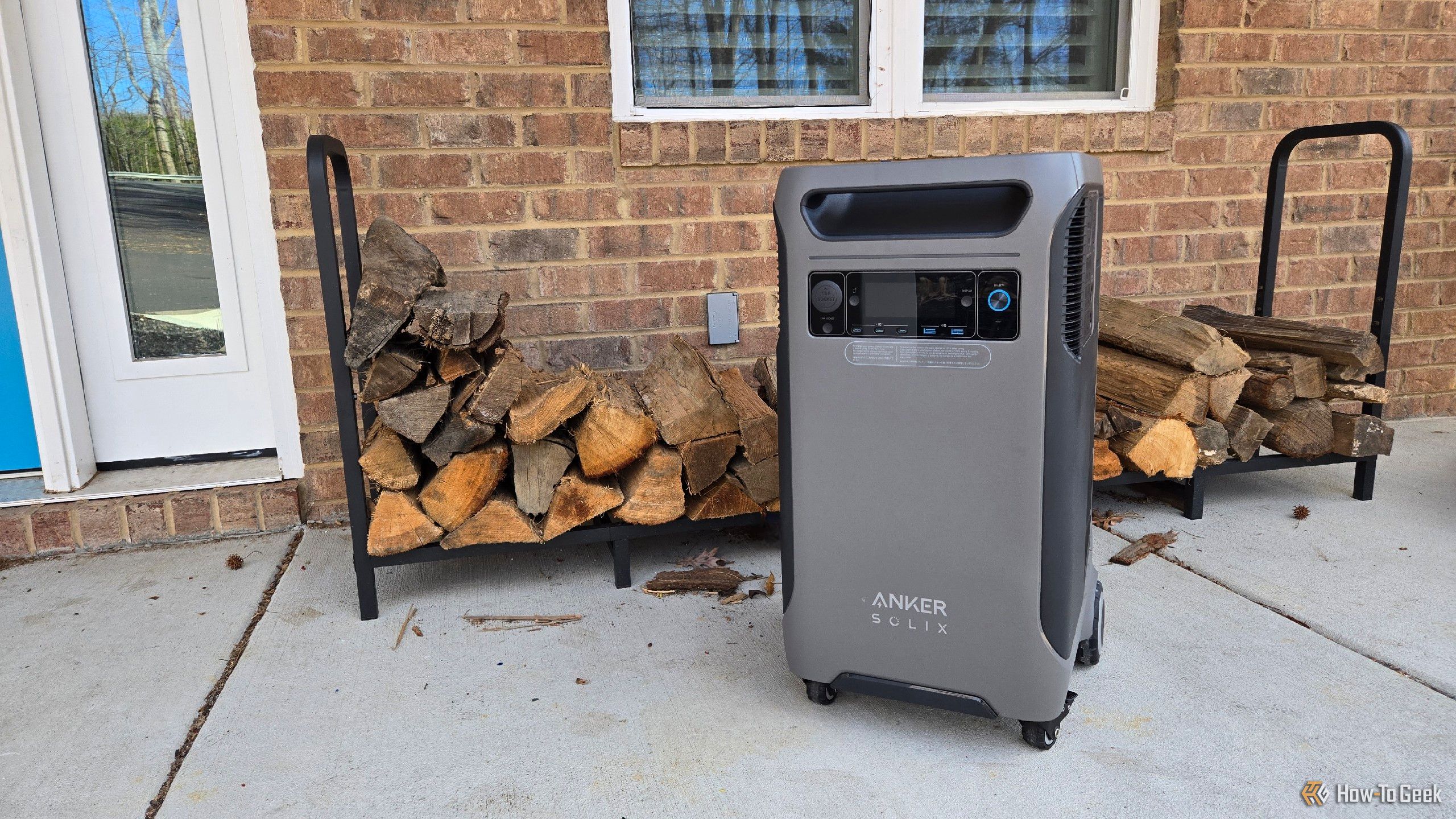
Related
Instead of a Powerwall, I Backed My Home Up With Tons of Solar Generators
It wasn’t cheap, but it was cheaper.
Smaller portable power banks build up my home’s resiliency. We’re up to seven of these smaller batteries, no larger than 10,000mAh, that are each able to recharge a phone at least once. Most are good for two charges. That reduces the strain on our larger power stations and greatly extends the number of days we can go in an emergency before we need to recharge.
Realistically, we’ve built up a large enough stash of batteries and portable solar chargers that, while outages still require us to change our energy usage, we are at very low risk of ever being completely without power.
1
Batteries Are Almost as Cheap as Wall Chargers
Smaller portable battery banks are priced low enough that they’re almost impulse buys—and that’s before they go on sale. I grabbed six of the seven power banks I mentioned as open box deals from Best Buy. I’m tempted to grab a few more.
My wife wanted our family to go out for dinner recently, and the price of food and ice cream for four was enough to buy five more batteries. Do we need that many batteries? No. I say this only to illustrate how cheap batteries have gotten (or how expensive everything else has become).
A reputable 20W wall charger can go for around $10–$20. This is in the same ballpark as many portable battery banks, especially when they’re on sale. Sure, it’s easier to find a charging block for under $10 than a decent battery, but the gap isn’t as big as you might think. And our newer batteries can certainly charge devices faster than the stash of slow, old USB charging bricks that we haven’t culled yet.
Relying heavily on portable power isn’t without its downsides. You have to regularly charge these batteries, so it helps to have a charging station set up somewhere. I have an Anker Prime 200W charging hub at my office desk that can charge several batteries at once. It makes keeping these power banks topped up no problem at all.


